A few months back, we rode Aprilia’s new RS 660 sport bike on the street and raved about its great handling, awesome features, and flexibility as both a commuter and a canyon carver.
Unfortunately, the press launch didn’t include time on track, which was a surprise, given the bike’s billing. Evidently, Aprilia was hesitant to put the only five RS 660s in the Western Hemisphere at risk. Can’t blame them for that, especially given how competitive us journos get when you let us loose on a track together. Luckily, once the machines fulfilled their official duties they joined the Aprilia Racers Days demo program, which is how I was finally able to throw a leg over the bike at Chuckwalla Valley Raceway in Desert Center, California.
So, how does it perform? In a word, excellent. I had an absolute blast on the RS 660 and ground down a perfectly good set of knee sliders. However, I’m guessing most people will want more of an explanation than that, so read on to learn how the RS 660 works in specific departments.
Riding position and ergonomics
It looks like a purebred sport bike, but the RS 660’s clip-ons sit a few inches above the triple clamp, so you’re not particularly hunched over. The arrangement made for a comfortable riding position on the street, and thankfully the layout works well for the track, too. I’d likely install lower clip-ons (a little tricky to do given the bars mount directly to the triple clamp) for a more aggressive posture at maximum lean, but as it stands the riding position is certainly suitable for attacking corners at speed. Just don’t expect to drag elbow unless you have Zack-length arms.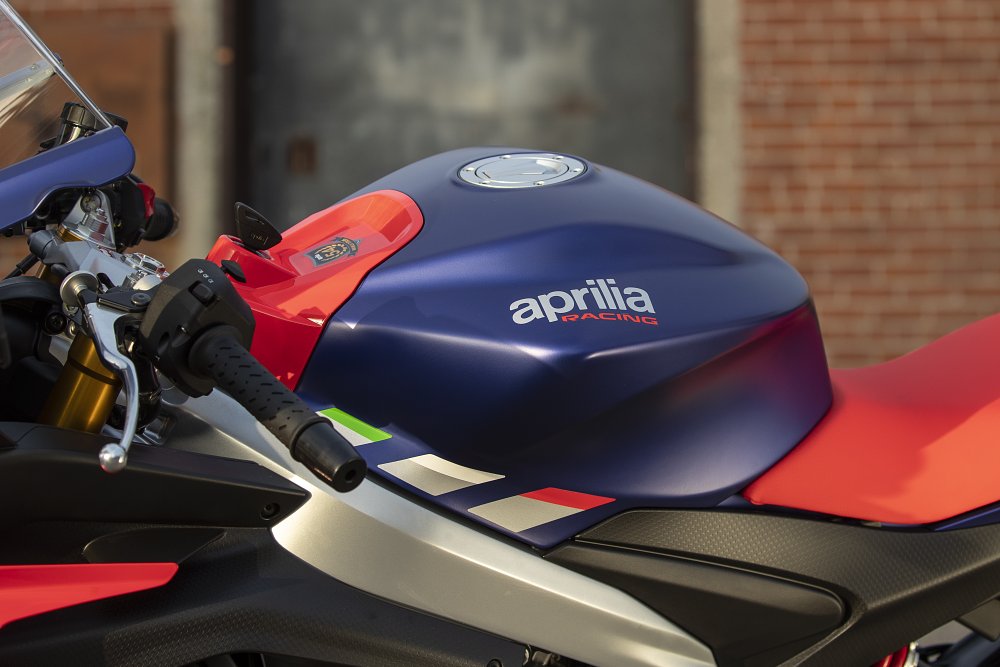
The aerodynamics felt clean despite gusty winds and the windscreen is large enough to tuck in behind, but just barely. Honestly, the biggest outlier at the track was the incredibly plush seat, which masked rear suspension/tire feedback and was harder to glide across while changing direction than a firmer saddle would be.
Engine
No, the Aprilia’s 100 claimed horsepower will not outpace an R6 on a straightaway, but the RS does have more midrange torque than a 600 cc inline four, so it will keep the supersports at bay for a respectable amount of time after an apex. The engine performance isn’t bonkers, but it is accessible and it’s definitely exciting, with a broad spread of power and a very V-twin like roar.
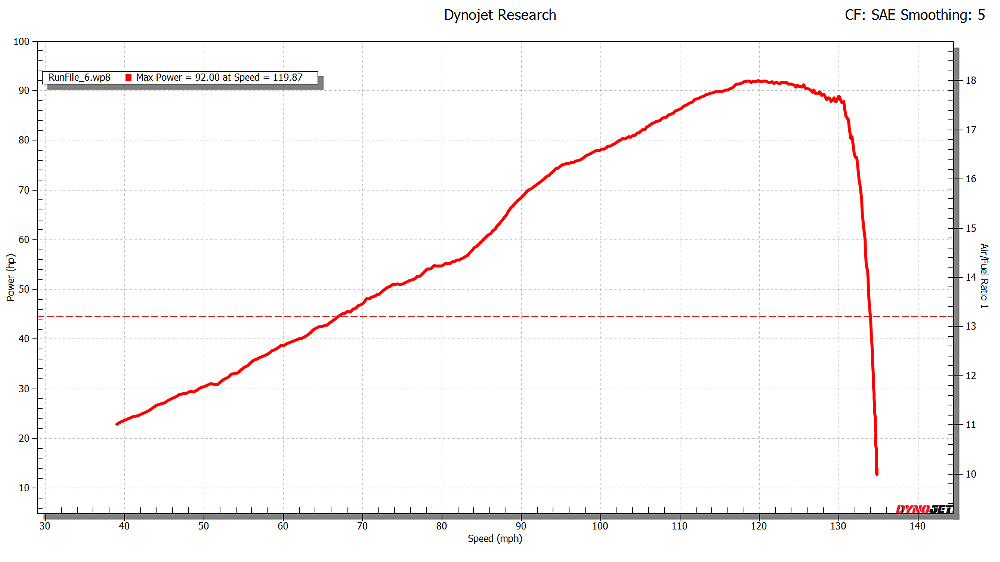
The standard quickshifter makes the Aprilia feel like a proper track weapon, and downshifts while hard on the brakes highlight how effectively the stock slipper clutch limits back torque to keep the rear tire in line at corner entry. These are premium features, and at the track you can fully utilize and enjoy them.
Suspension and handling
Both the fork and shock on the RS are made by KYB and offer adjustable spring preload and rebound damping. For the track, Aprilia cranked in more of everything and slid the forks up in the triple clamp 4 mm to sharpen steering. The bike was also running Pirelli Diablo Superbike slicks in place of the stock Diablo Rosso Corsa 2 tires.
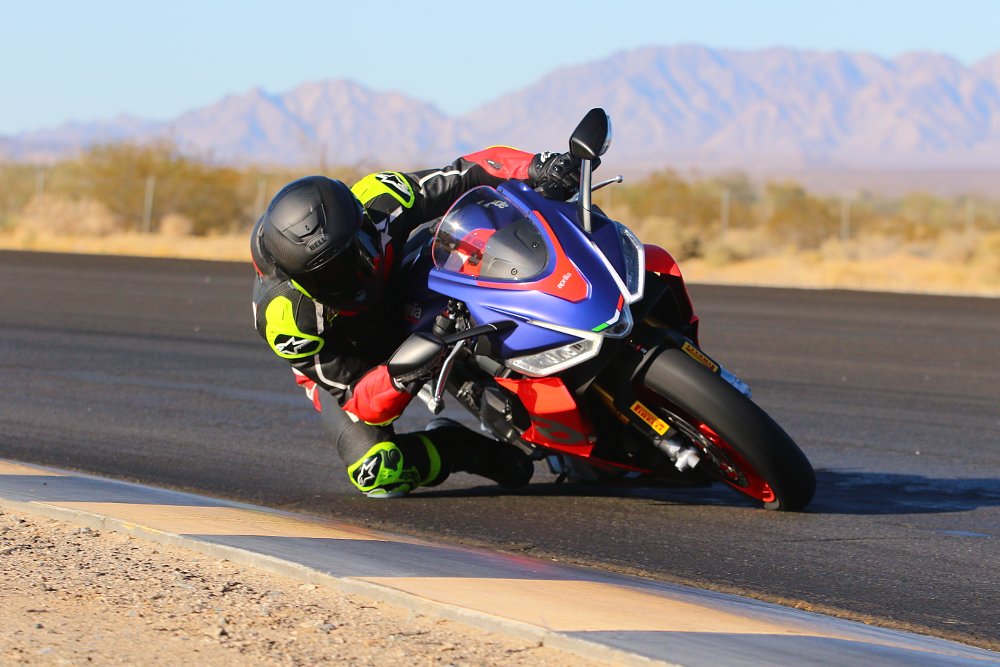
The suspension action is a good match for the bike’s power and weight, with nothing immediately deficient in any way. Sure, I’d like more support for hard braking and there’s too much suspension motion for truly forceful direction changes (which the slicks encouraged me to make), but the bike didn’t wallow like many street bikes do when you push them on the track.
As it stands, the OEM suspension is able to straddle street comfort and track control, which is an impressive feat. Considering how well the bike works in stock trim, it’s liable to exhibit true precision with more refined suspension.
Brakes
Aprilia blessed the RS 660 with some serious braking hardware, but Chuckwalla is a flowing track and doesn’t have much in the way of maximum braking, so testing the setup at the threshold wasn’t an option. It’s clear though that this bike has plenty of brakes, with enough power to easily lift the rear wheel and sufficient feedback to feel comfortable trail braking to full lean.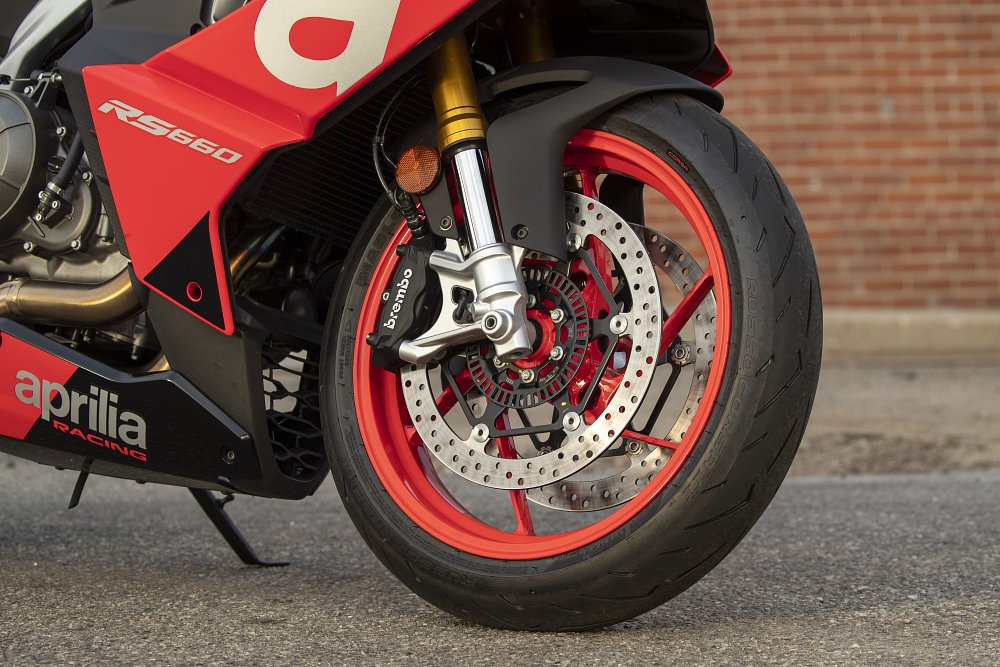
Electronics
One of the RS’s claims to fame is a comprehensive electronics package that rivals halo models. From a big TFT dash with integrated lap timer to IMU-informed ABS and a bi-directional quickshifter, the RS is fully equipped.
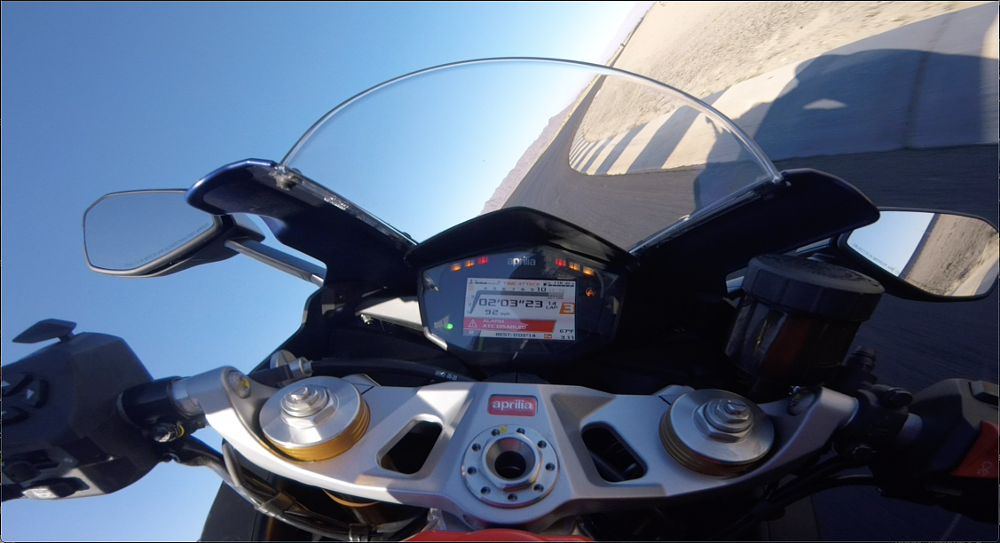
You can adjust the TC on the fly and I left it on a low setting just because, but it was superfluous given the fresh, hot,180-series Pirelli slick anchoring the back of the bike. So, when the dash randomly went on the fritz and began flashing a big red “ALARM - ATC DISABLED” warning I didn’t pay it any mind or bother slowing down.
The dash reset when I cycled the key, but reappeared in every session. According to Aprilia, the new Magnetti Marelli ECU is experiencing growing pains with the bike’s can-bus communication system. Supposedly there’s already a fix ready, and given that these are pre-production bikes with single-digit VIN numbers, I think a few teething problems with a drastically more advanced ECU are acceptable.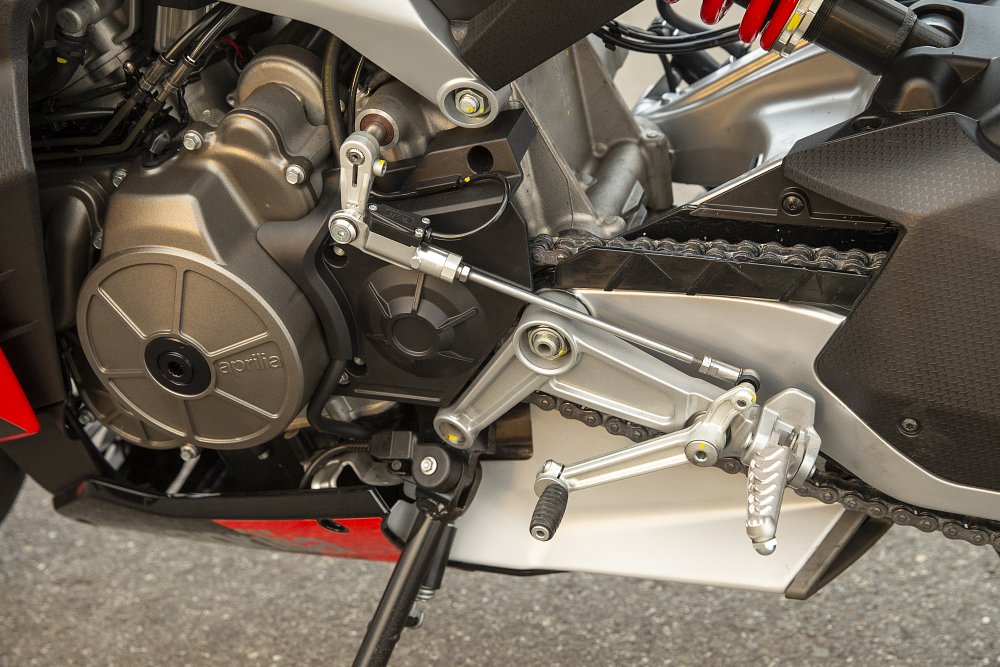
Final thoughts
At this point it should be clear that the RS 660 is a capable and willing track-day partner, and it’s the kind of versatile bike that any rider — total track newb or card-carrying roadracer — will enjoy flogging. For me, it was a thrill to ride not just because it works so well, but because I actually felt like I was utilizing a majority of the performance the Aprilia has to offer. Meanwhile, I rarely feel like I’m doing a 600 or 1000 cc bike justice.
On the topic of 600s, it’s true that the Aprilia’s performance threshold may ultimately be lower than that of a Yamaha YZF-R6, but I can assure you that this bike’s marginally lower power is far easier to access and implement. That being the case, I’m willing to bet that a novice track-day rider would actually be faster on the Aprilia than on a 600.
And as we know, the RS 660 is a significantly better street bike for all those days you aren’t at the track.



















